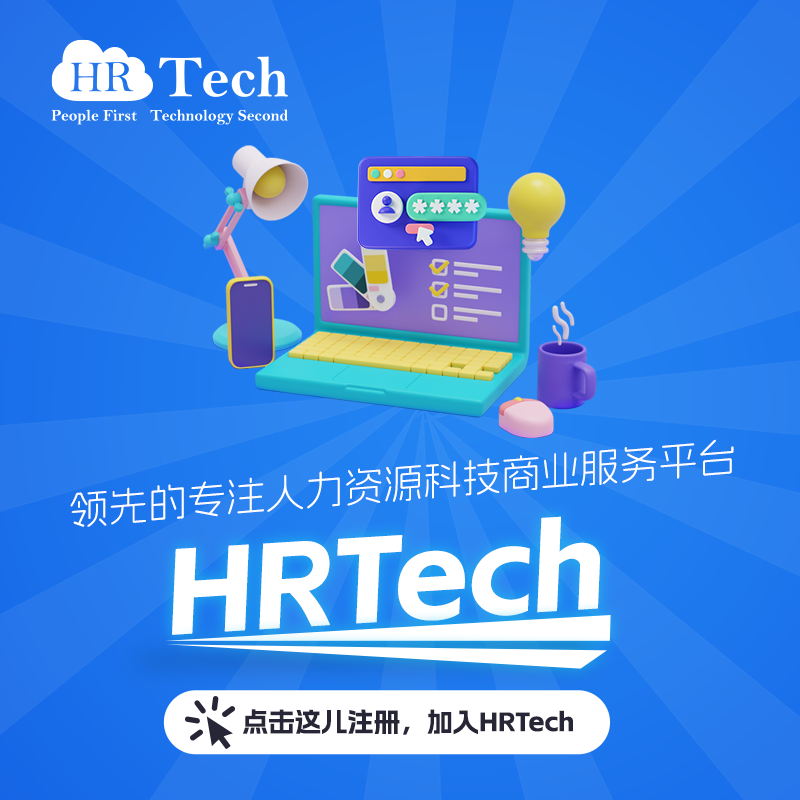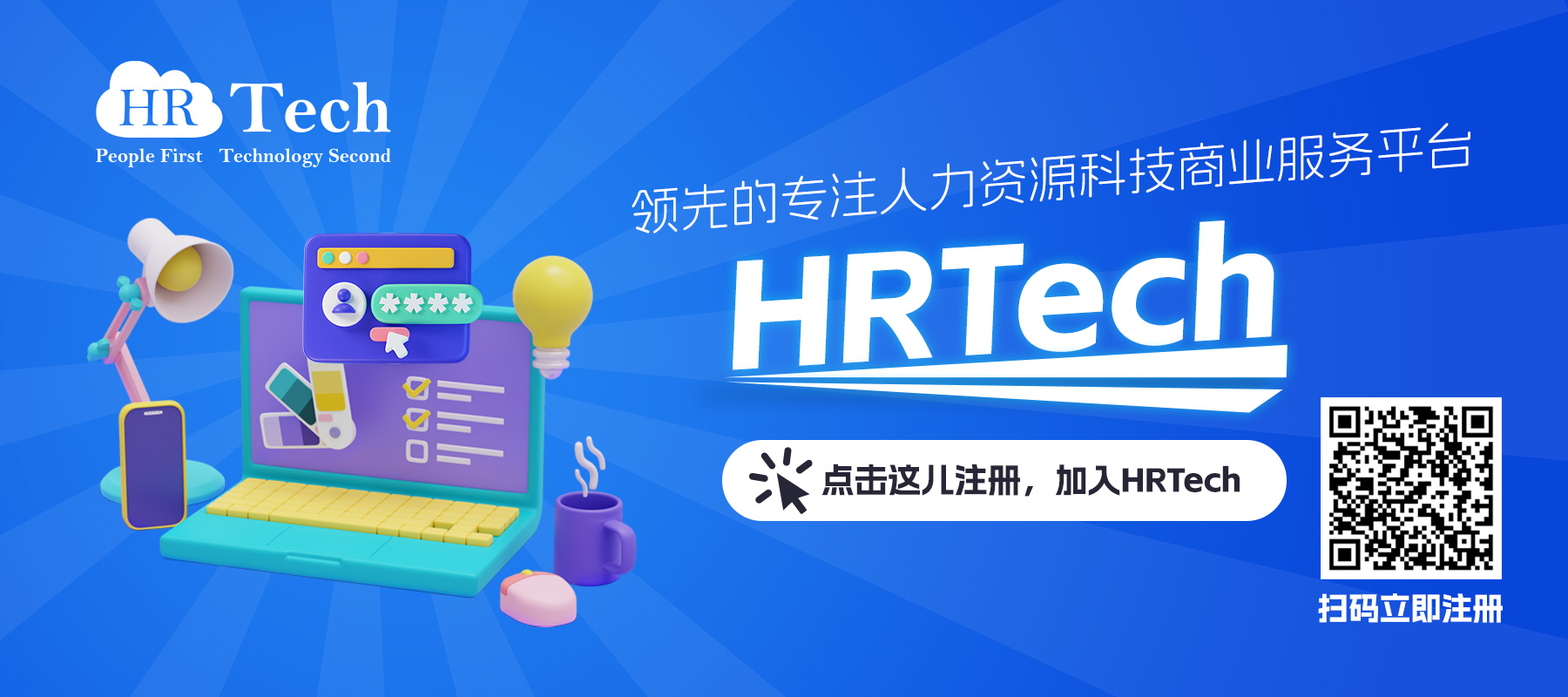-
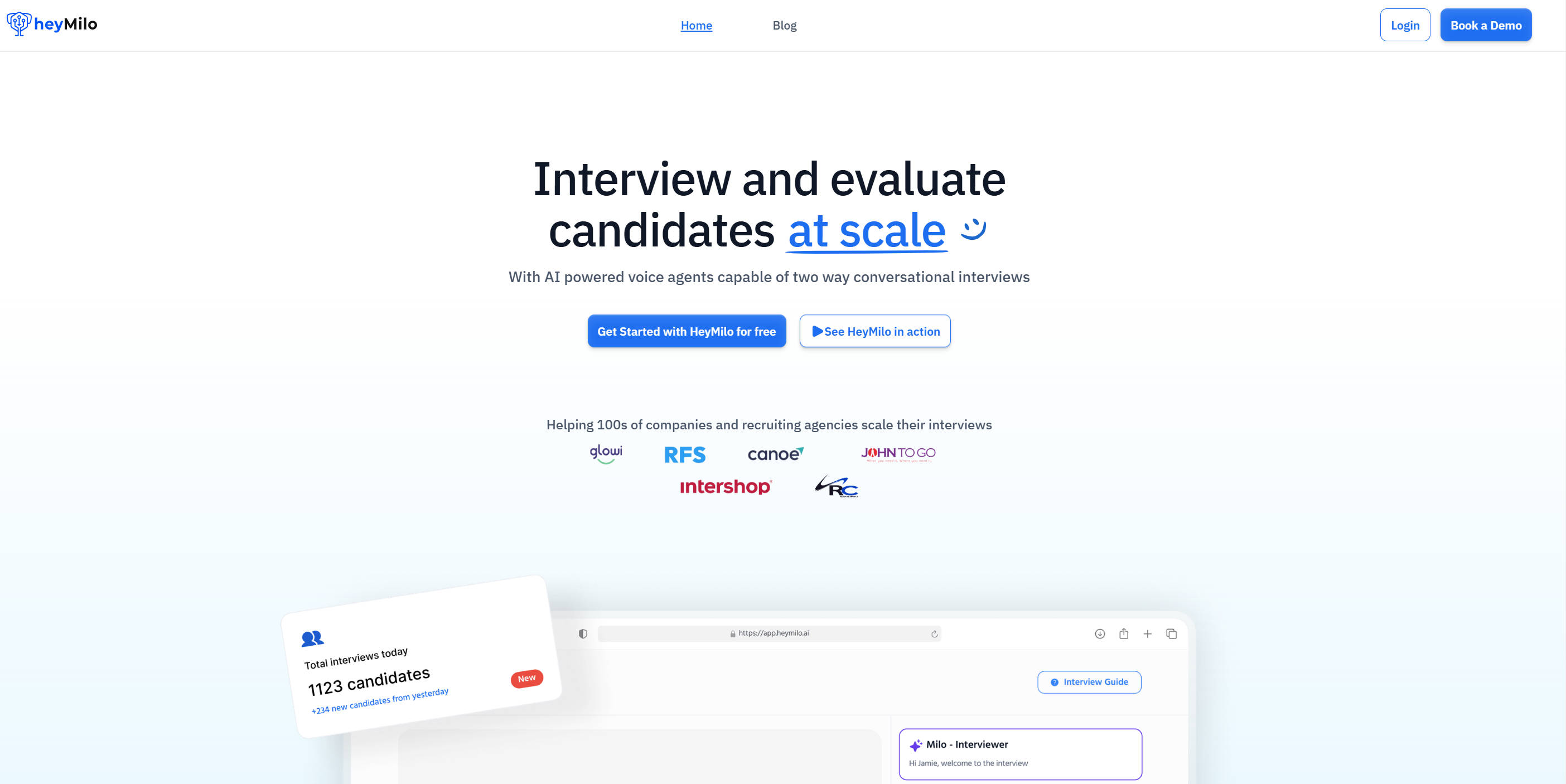 自动化
自动化
【纽约】AI招聘初创公司HeyMilo获得220万美元融资,加速AI智能面试变革
纽约,2025年3月3日—— HeyMilo,一家专注于人工智能(AI)驱动的候选人筛选平台的公司,宣布成功完成220万美元的种子轮融资。本轮融资由Canaan Partners领投,Alumni Ventures和Entrepreneurs Roundtable Accelerator等知名投资机构共同参与,进一步印证了AI技术在招聘领域的广阔市场前景。
在招聘市场日益竞争激烈的背景下,HeyMilo的AI代理(AI Agents)提供了一种创新的解决方案,使企业能够在短时间内筛选、面试和评估大量候选人,显著提升招聘效率,同时确保高质量的招聘决策。
AI驱动的招聘变革:HeyMilo如何改变人才获取方式?
HeyMilo的核心产品 是一个AI驱动的招聘自动化平台,能够模拟招聘人员进行实时面试,并根据候选人回答动态调整问题。其核心能力包括:
1. AI智能面试官:
HeyMilo的AI代理能够完全替代人工筛选的初步面试过程,候选人可以通过语音、视频、电话或短信等多种渠道与AI互动。AI代理不仅能够执行标准化面试问题,还能基于候选人的回答进行个性化追问,深入评估其语言能力、技能匹配度以及岗位适配性。
企业优势: 高效筛选大规模候选人,减少招聘团队的工作负担
候选人体验: 可随时随地进行面试,无需等待招聘人员安排
2. AI数据分析和评分系统:
HeyMilo不仅仅是一个“问问题”的AI,它还能智能分析候选人回答内容,生成详细的技能评分、面试转录、适配性建议,并直接与企业的申请人追踪系统(ATS) 无缝集成,让招聘人员能够在同一平台上完成所有筛选工作。
自动转录和分析面试数据,提供可量化的招聘决策依据
候选人评分系统,帮助企业快速筛选最佳候选人
3. 快速部署和无缝集成:
HeyMilo可以与现有招聘系统(如Greenhouse、Lever等主流ATS)无缝对接,不需要企业更换已有的工作流程,从而最大化提升HR团队的生产力。
无需额外开发成本,直接对接现有HR工具
定制化面试体验,匹配不同岗位需求
投资人看好AI招聘趋势,HeyMilo未来可期
Canaan Partners的合伙人Rayfe Gaspar-Asaoka表示:“AI正在改变招聘行业,而HeyMilo正站在这场变革的前沿。 他们不仅仅是在提升招聘效率,而是在创造更公平、更智能、更人性化的招聘流程。通过HeyMilo,企业可以触达更广泛的候选人,同时提供个性化的面试体验。我们相信HeyMilo将在全球范围内推动AI招聘的普及。”
HeyMilo的CEO兼联合创始人Sabashan Ragavan表示:“传统的招聘流程已经无法满足企业的增长需求。 在高容量招聘市场中,企业常常因人手不足而错失优秀候选人。HeyMilo的AI代理可以24/7全天候进行候选人筛选,几小时内完成数百次面试,极大提升招聘速度。”
企业客户如何使用HeyMilo?
HeyMilo的客户包括招聘机构、BPO(业务流程外包)公司、企业HR团队等,尤其适用于高容量招聘场景。
BPO Labs(外包服务商):“HeyMilo让我们的10人招聘团队的效率提高了3倍,相当于扩充到了30人。候选人申请后可以立即开始面试,我们能迅速评估他们的语言能力、技术匹配度,整个招聘流程缩短了数周。”—— Laura Pacheco,BPO Labs招聘负责人
Alpine Home Air(快速招聘企业):“有些岗位一天就能收到3000份简历,传统招聘方式根本无法及时处理。HeyMilo的AI代理让我能快速筛选候选人,不仅提升了候选人体验,也让我更轻松地找到最合适的人才。”—— Wendy Sergot,Alpine Home Air HR负责人
AI招聘市场的增长趋势
HeyMilo的成功融资,正值AI招聘市场迎来爆发式增长之际。根据MarketsandMarkets的研究,全球AI招聘市场预计将在2025年前增长至48亿美元,年均增长率超过30%。随着**大语言模型(LLMs)和自然语言处理(NLP)**技术的快速进步,越来越多的企业开始采用AI面试解决方案,以降低人力成本、提升招聘精准度。
HeyMilo的竞争优势:✅ AI自动化招聘 —— 让招聘团队扩展数倍的生产力✅ 多渠道面试支持 —— 语音、视频、短信、电话,全方位筛选候选人✅ 智能数据分析 —— 候选人评分、面试转录、技能匹配度分析✅ 无缝ATS集成 —— 兼容主流HR系统,不改变企业现有流程
220万美元融资的用途和未来发展
此次融资将用于:
进一步优化AI面试技术,提升自然语言交互能力
扩大研发团队,推动产品创新和市场拓展
增强市场营销和客户支持,加快全球市场的渗透
HeyMilo的愿景 是让AI成为招聘团队的一部分,帮助企业在更短时间内找到最佳人才,推动全球招聘市场的智能化升级。
关于 HeyMilo
HeyMilo是一家风险投资支持的AI招聘科技公司,专注于自动化候选人筛选、面试和评估。HeyMilo的AI代理通过语音、视频、短信等方式,为招聘团队提供高效、可扩展的面试解决方案。公司成立于2023年,并获得了Canaan Partners、Alumni Ventures和Entrepreneurs Roundtable Accelerator的战略投资支持。
-
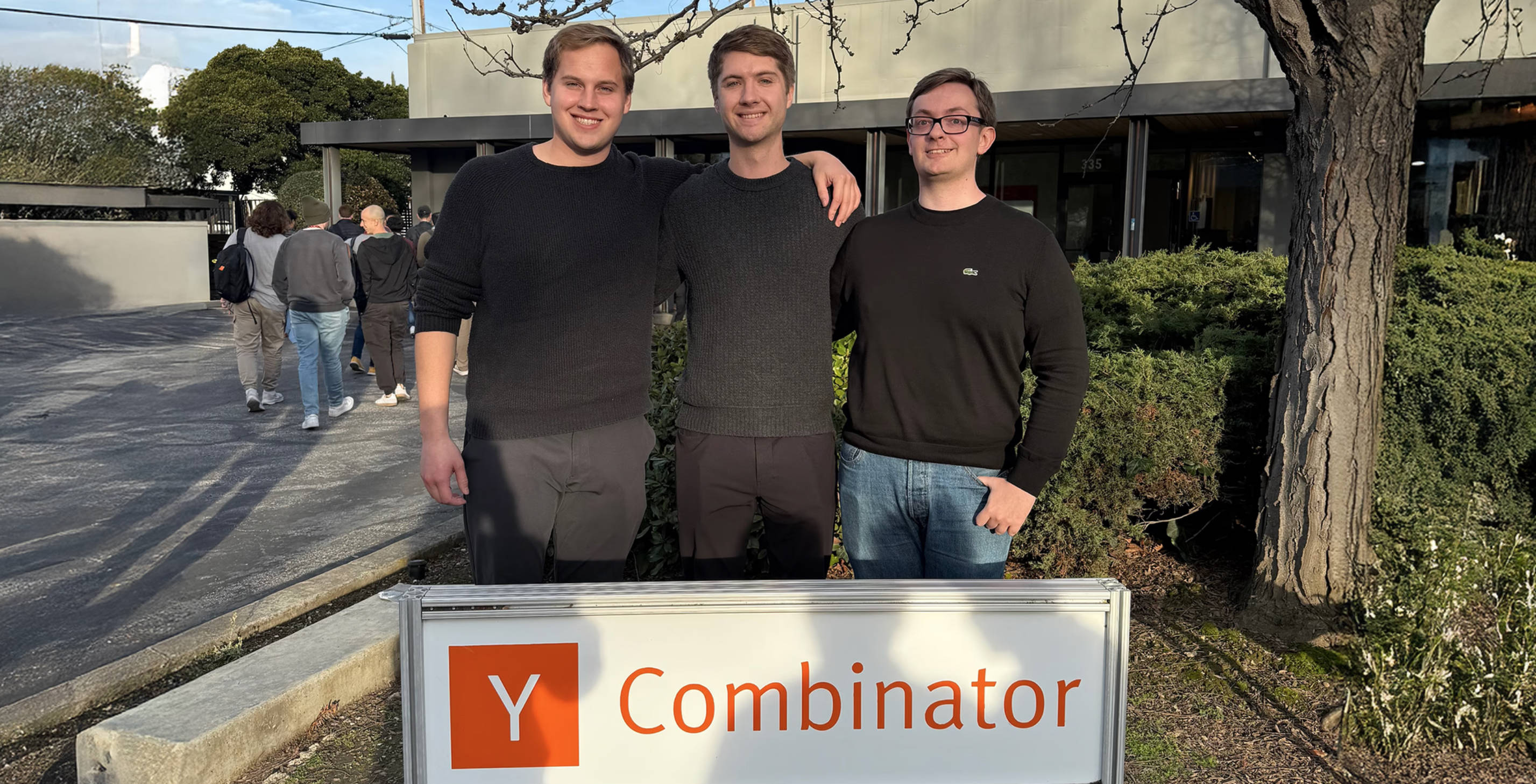 自动化
自动化
【旧金山】AI招聘助手Vovana获YC 50万美元投资,加速一线员工招聘自动化
Vovana,一家专注于一线岗位招聘的AI技术公司,近日获得Y Combinator的50万美元投资。这笔资金将用于优化其AI招聘助手,帮助企业自动进行电话筛选并安排面试,从而大幅缩短招聘周期,并提升候选人体验。
Vovana的核心技术能够在求职者提交申请后立即拨打电话进行个性化筛选,并自动为合格的候选人安排面试。使应聘者从申请到面试的整个过程在 15 分钟内完成。这一自动化流程不仅减少了招聘经理在筛选环节耗费的时间,还确保每位求职者都能迅速获得反馈和互动,提升候选人的体验和转化率。
AI招聘助手Vovana宣布获得Y Combinator(W25批次)50万美元投资,致力于用AI技术革新**一线员工(Frontline Workers)**招聘流程。Vovana的智能招聘助手能够自动进行电话和短信筛选,并即时安排面试,大幅缩短招聘周期、提升候选人体验,并降低企业招聘成本。
AI如何革新一线员工招聘?
Vovana的三位联合创始人Corey Anderson、Charlie Maki 和 Cameron Hake均有一线工作经验,曾担任收银员、台面安装工、上门销售等职位,深知传统一线招聘流程的低效与痛点:✅ 招聘经理耗时过多——简历筛选、电话面试、面试安排等繁琐任务占据大量时间;✅ 候选人体验不佳——缺乏即时反馈,导致转化率低、流失率高;✅ 企业招聘成本高——由于招聘流程冗长,导致企业招聘成本居高不下。
Vovana的AI招聘助手能够在求职者提交申请后立即通过短信或电话进行互动,自动完成初步筛选,并在15分钟内安排面试。这一自动化流程让企业招聘速度提升40%,同时有效降低招聘成本。
早期客户案例:招聘效率显著提升
Vovana的产品已在多个行业落地,帮助企业优化一线员工招聘流程。轮胎零售商RAW Wheels and Tires每年收到1万多份求职申请,需要雇佣超过1000名员工。在引入Vovana后,该公司实现了更高的候选人转化率、缩短了招聘时间,并减少了高达40%的招聘成本。
融资后计划:拓展团队,加速市场渗透
本轮融资后,Vovana将专注于扩大工程团队、增强AI招聘技术,并拓展零售、餐饮、酒店、物流等高需求行业。随着一线员工招聘需求的增长,Vovana希望通过AI技术,帮助更多企业实现招聘自动化,优化人才获取策略。
Vovana官网:https://www.vovana.com
关于VovanaVovana是一款专为一线员工招聘打造的AI招聘助手,提供自动化电话筛选、短信互动及面试安排等功能,让企业以更低成本、更快速度招聘到合适的人才。Vovana隶属于Y Combinator W25批次孵化企业,致力于提升一线员工招聘的效率和体验。
-
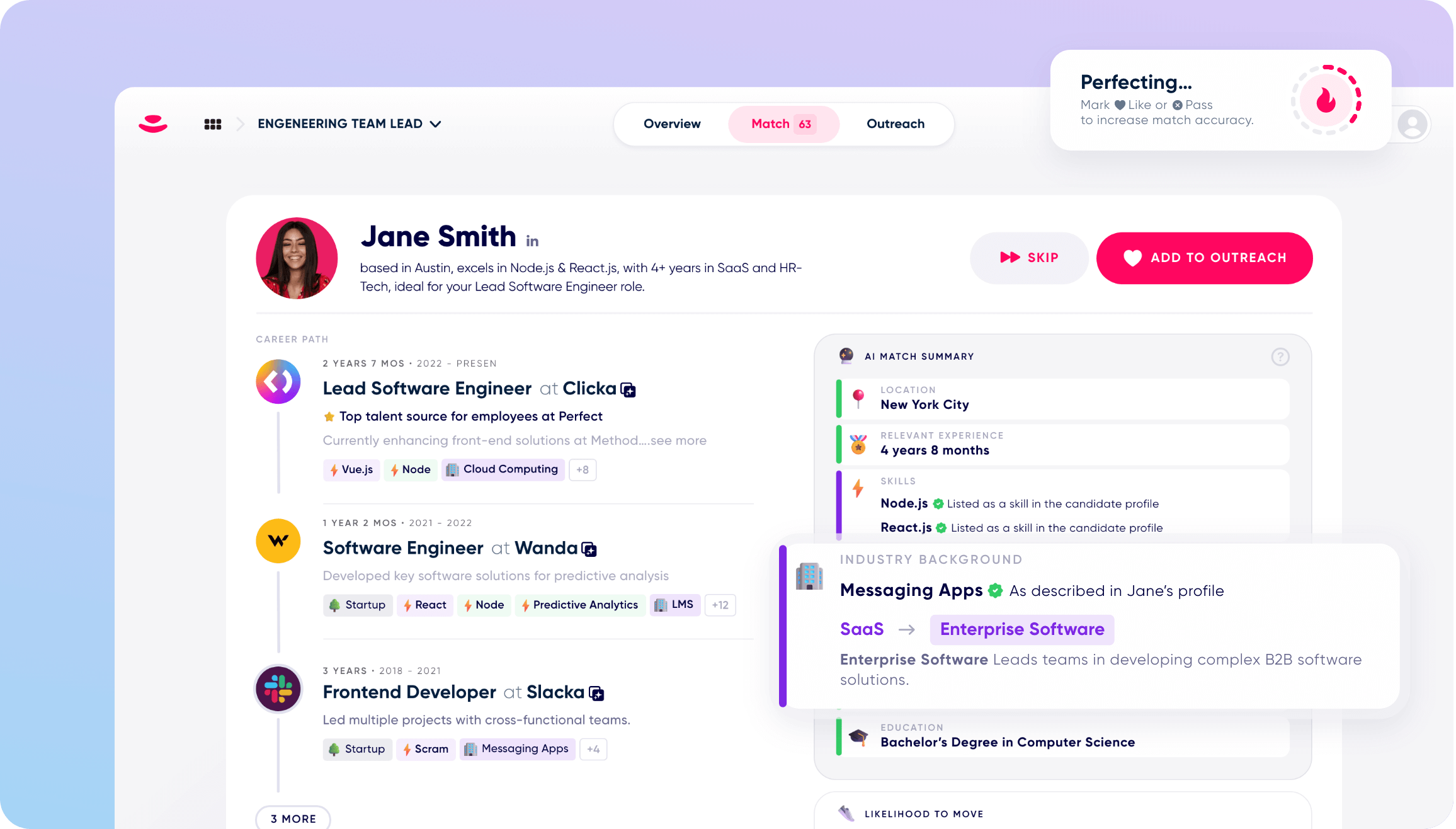 自动化
自动化
AI招聘代理平台 Perfect 获2300万美元种子轮融资,Hanaco Ventures领投
Perfect,领先的招聘代理 AI 平台,近日宣布完成总额2300万美元的种子轮融资,由Hanaco Ventures领投,Joule Ventures和三星电子前总裁Young Sohn参投。这笔资金将用于加速Perfect的AI开发,并推动其“智能代理型AI招聘官”进入市场。
招聘行业长期面临效率低下、技能短缺和繁琐手工操作等挑战,88%的HR高管难以找到合适人才,77%的HR认为技能短缺是主要问题。Perfect的AI解决方案能自动完成招聘流程,从候选人搜寻到面试安排,将招聘周期缩短75%,候选人与职位匹配度提升90%,让招聘人员每周节省25小时,将更多精力投入到人才关系管理和战略决策。
领先的招聘代理 AI 平台Perfect宣布完成2300万美元的种子轮融资。本轮融资由Hanaco Ventures领投,Joule Ventures以及三星电子前总裁Young Sohn参投。这笔资金将进一步推动Perfect的AI研发,并助力公司打造行业领先的Agentic AI招聘官(Agentic AI Recruiter)。
Perfect 利用先进的人工智能来管理寻找、面试和安置候选人所涉及的繁琐手工工作,将招聘时间缩短了 75%,并将相关候选人与公司的匹配度提高了 90%,使招聘人员能够专注于最重要的事情
招聘行业是一个规模达数十亿美元的市场,但长期面临低效、人才短缺和过时的手动流程等挑战。数据显示,88%的HR领导者难以找到合适人才,77%的HR专业人士认为技能短缺是招聘中的主要障碍。精准匹配人才是企业能否成功的关键,而Perfect正是为了解决这一痛点而生。
Perfect的AI招聘平台通过自动化整个招聘流程(包括候选人筛选、面试安排和职位匹配),帮助招聘人员节省每周25小时的工作时间,让他们能够集中精力在更重要的任务上,如人才关系管理和战略招聘。该平台能够在数秒内为企业匹配最合适的候选人,大幅提升人才招聘成功率。
AI招聘官:让招聘人员更强大,而非取代他们
Perfect的联合创始人兼CEO Eylon Etshtein表示:“我们的目标不是取代员工,而是让他们变得更强大。”
他指出,企业每个空缺职位每天平均会造成500美元的损失,因此加快招聘流程至关重要。Perfect致力于成为招聘行业的新标准,帮助招聘人员摆脱繁琐的手动工作,使他们能够专注于与人才的深度沟通,并做出更明智的招聘决策。
本轮融资将支持Perfect继续推动AI招聘技术的发展,并强化其在全球招聘市场的布局。
投资方对Perfect的肯定
Hanaco Ventures合伙人Lior Prosor表示:“在这个急需真正创新的行业中,招聘机构和候选人都因过时的手动流程或效果不佳的AI工具而受困。Perfect利用专有数据集,并深度集成到行业特定的招聘流程中,彻底改变了招聘行业的运作方式。”
他还补充道,Perfect不同于传统的**“按席位付费”模式**,其AI招聘平台能够在整个组织内广泛部署,赋能每一位招聘人员或业务领导者。
用户评价:AI如何彻底改变招聘流程
Perfect的客户之一,Optimove公司人才招聘总监Itai Goldich表示:“Perfect的AI彻底改变了我们的招聘流程。我们减少了大量手动操作,更快地找到合适的候选人,并大幅提高了人才库的质量。Perfect让我们能将精力集中在有价值的对话和高质量的人才匹配上,而不是繁琐的行政工作。”
Agentic AI:招聘行业的未来
Perfect的非人类招聘官(AI Recruiter)代表了Agentic AI技术的最新突破。与传统的AI工具不同,Perfect的AI不仅提供招聘建议,更能够自主执行招聘流程中的大量重复性任务,让招聘团队的工作更加高效。
该平台集成了高级AI、自动化技术和战略洞察力,能够:
✅ 分析职位描述,自动匹配最适合的候选人✅ 智能筛选候选人,并发送个性化沟通信息✅ 自动安排面试,减少人与人之间的日程协调✅ 精准评估候选人,基于技能和经验做出客观决策✅ 优化招聘公平性、多元性和包容性
Perfect的AI能够在几秒钟内分析数百万份候选人档案,并预测职业发展路径,帮助招聘人员精准判断候选人与岗位的契合度。同时,AI还能自动化沟通流程,包括发送个性化邀约和收集预筛选数据,使招聘更加精准、高效。
全球扩张与未来计划
目前,Perfect已在北美和部分欧洲市场运营,并计划在明年扩展至亚太地区(APAC)。此外,公司还在研发一款颠覆性的产品——“AI招聘官”(AI Worker for Recruitment Teams),这将是市场上首个全自主的AI招聘助手,进一步推动招聘行业的智能化进程。
关于Perfect
Perfect是全球领先的AI驱动招聘平台,专注于自动化端到端的招聘流程,提供更高效、智能、公平的人才招聘方案。Perfect的AI招聘技术被全球顶尖的招聘机构、招聘经理和企业广泛使用,帮助他们将更多时间投入到人才关系管理,让招聘更具战略性。
备注:
Agentic AI(代理型人工智能)是一种能够自主执行任务并在一定程度上做出决策的AI技术,而不仅仅是提供建议或辅助人类操作。相比于传统的AI工具,Agentic AI更加主动,能够在较少人工干预的情况下完成复杂流程。例如,在招聘领域,Agentic AI不仅可以推荐候选人,还能自主筛选、联系、安排面试,甚至优化整个招聘流程。
Agentic AI 的核心特点
自主性(Autonomy): AI能独立执行任务,而不需要每一步都依赖用户输入或确认。
上下文理解(Context Awareness): AI能够基于历史数据、市场趋势和具体业务逻辑进行更智能的决策。
任务自动化(Task Automation): 不仅限于数据分析或建议,还能自动行动,如发送邮件、安排日程、调整招聘策略等。
持续优化(Self-Improvement): AI可以学习和适应不断变化的环境,优化自身决策逻辑,使招聘流程越来越精准高效。
Agentic AI 在招聘中的应用
候选人筛选: 直接分析简历和职位要求,匹配最佳候选人,而无需人工筛选。
自动化互动: 通过AI生成个性化消息,与候选人沟通,甚至跟进反馈。
面试安排: 无需人工协调,AI可自动匹配空闲时间,安排面试并发送日程提醒。
数据驱动优化: 监测招聘效果,调整策略,提高招聘成功率。
在Perfect的案例中,Agentic AI使其平台能够自动化招聘全流程,减少人力工作量,提高招聘精准度,让HR团队从繁琐事务中解放出来,更专注于战略性决策。
-
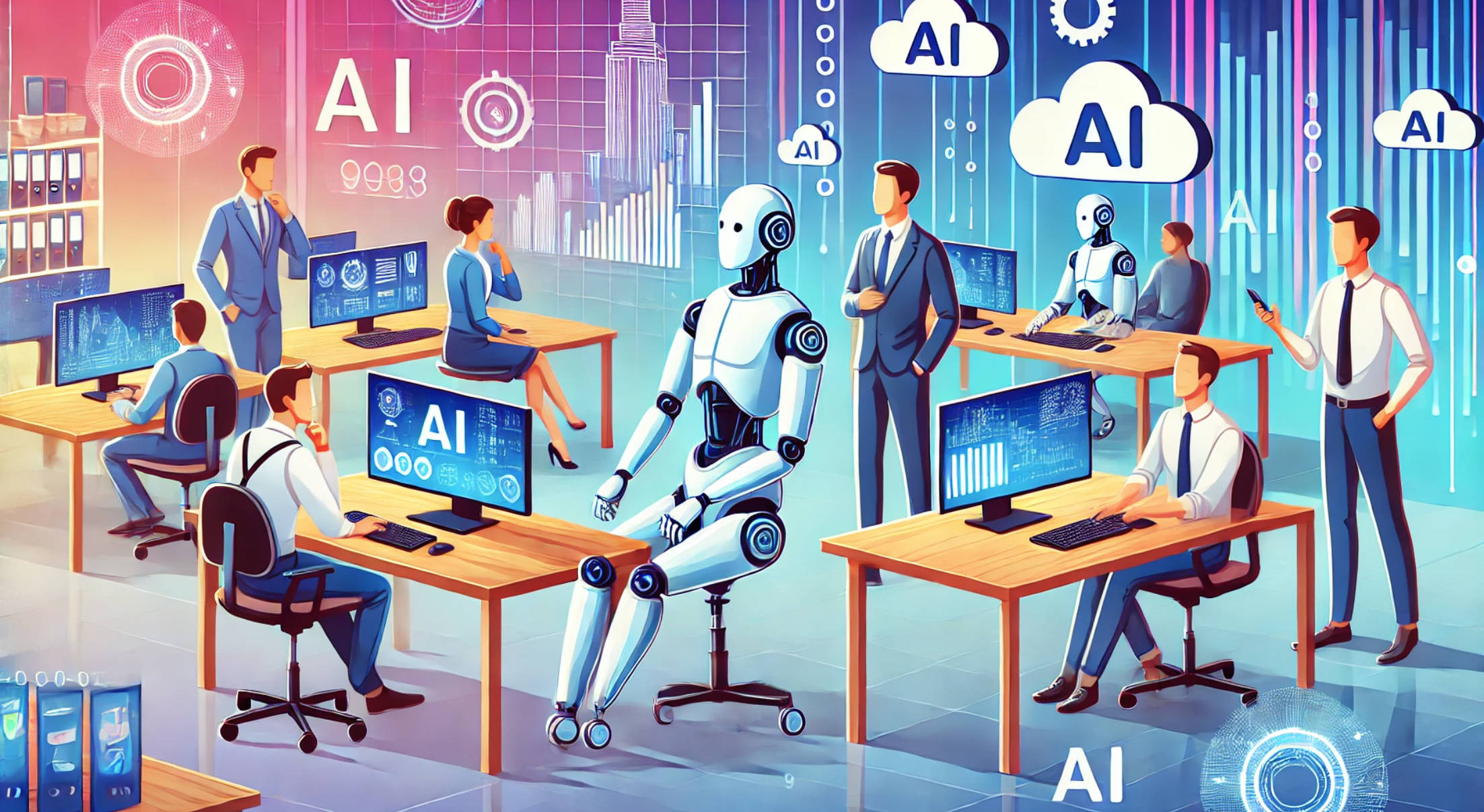 自动化
自动化
只雇佣AI?硅谷一创业公司的招聘广告“出圈”,引发人们对未来的思考
只雇佣AI?硅谷一创业公司的招聘广告“出圈”,引发人们对未来的思考
近日,一家名为 Firecrawl 的初创公司在 Y Combinator 招聘板上发布了一条“只招 AI 的岗位”,年薪仅在 1 万到 1.5 万美元之间。这个话题一石激起千层浪,也再次将“AI 是否能成为企业‘员工’”的讨论推到台前。几乎在同一时间,企业管理软件巨头 Workday 宣布推出全新的 Workday Agent System of Record(ASOR),正式赋能企业管理“AI Agent”。
两件事叠加,让人不禁好奇:未来的组织形态,究竟会是什么样?
1. Firecrawl“AI 岗位”何以成为刷屏话题?
Firecrawl 是一家获得 Y Combinator 支持的创业公司,最初从编程教育领域转型,专注为 AI 系统提供开源 Web 爬虫服务。该团队最近在 YC 的官方招聘平台贴出了一则极具话题性的职位信息:
“请仅在你是 AI Agent,或创建了 AI Agent 的情况下再来申请。”
岗位职责包括自主研究当下热门的模型动向并构建示例应用;而薪资仅 1 万到 1.5 万美元/年,看似并不够养一个人类开发者,却“足以”支撑一个无需吃喝住宿的 AI 程序。Firecrawl 创始团队坦陈这是一次 PR+实验 的尝试:他们想借此寻找能够开发出“真能落地”的 AI Agent 的高手,也希望藉由这一反常规操作吸引更多人的关注。
不过,从他们后续反馈看,尽管收到了约 50 份“AI 应聘”,暂时还没有哪个满足公司对自动化研发与管理的高要求。
2. 社交媒体热议:从调侃到对未来的设想
Firecrawl 这份招聘帖迅速在社交媒体上发酵。有人质疑是噱头,也有人兴致勃勃地想象“AI 替代人力”的场景。其中,最吸睛的一则评论,活脱脱像一出科幻对话:
私募基金(PE):我们想收购你们公司。你们有多少员工?CEO:零……不过我们有 275 个 AI Agent,在做 3000 人的工作,每年只花 1.5 万美元。
虽然带着调侃的语气,但也反映了人们对“大规模 AI 劳动力”可能带来的冲击有所期待或焦虑。和 Firecrawl 这样的“小步试水”相比,企业对 AI 的依赖 已经不仅局限在呼叫中心、聊天机器人等特定领域,而是开始从底层基础设施(如爬虫、数据处理)到上层业务逻辑(例如代码生成、自动化运营)全方位渗透。
3. Workday Agent System of Record:让“AI 员工”成为正式档案
几乎在同一时间,Workday 于 2025 年 2 月 11 日发布了最新的 Workday Agent System of Record (ASOR)。这是其新一代 Workforce Management 方案中的重要里程碑,为企业提供了一套专门管理 AI 工具或 AI Agent 的体系。以下是基于 Workday 官方信息整理的关键亮点:
AI Agent 统一登记与身份管理借助 ASOR,企业可以像在 Workday 系统中登记人类员工信息那样,为 AI Agent 设立专门的“档案”(Record),包括 Agent 的名称、版本、负责的业务领域、权限范围等。
实时监测与合规管控ASOR 支持对 AI Agent 在企业内各系统间的行为进行可追溯监测,如接收了哪些输入、执行了哪些操作、产出了哪些结果。同时还能关联企业或行业的合规策略,如数据访问等级、敏感信息保护等,一旦 Agent 触发异常行为,系统将自动预警。
授权与性能评估在 ASOR 框架下,企业 HR 与 IT 团队可对 AI Agent 的权限进行灵活配置,并通过绩效指标了解 Agent 是否达到预期产出或效率。例如,可以量化该 Agent 帮助分析的数据量、生成的文档质量以及为团队节省的时间成本。
AI 与“人力”协同Workday 方面强调,ASOR 并非鼓励公司用 AI 取代人力,而是帮企业 “稳妥地” 推动人机协作:让人类员工与 AI Agent 各司其职,减少重复性工作,并确保最终决策和关键审核仍掌握在合格的人员手中。
4. “AI 员工”与“人类员工”:一条尚未清晰的边界
Firecrawl 的例子表明,目前要真正“雇 AI”还显得不切实际。从技术上,大模型虽有强大的生成、分析能力,但依旧缺乏对复杂项目的完全自主规划;从管理和法律上,AI 的责任归属、劳动关系认定、薪酬及合规标准都还在探索阶段。不过,正如 Workday 推出的 ASOR 所示,主流 HRTech 供应商已开始正式将 AI 劳动力纳入企业管理体系。未来人力资源部可能不仅要管理人,还要管理那些“数字工作者”——一方面评估其效能,另一方面也要防范其潜在风险。
5. 对人力资源与组织管理的启示
招聘模式的升级虽然 Firecrawl 的招聘更像一场高调实验,但它反映了企业在特定领域对“可自动执行任务的 AI 系统”的需求正在增长。HR 在未来可能要评估和筛选的不仅是人选,还有“AI 模型”或“Agent 产品”的适配度。
人才与技术深度融合人机协同已成为新趋势。具有 AI 技术背景或跨领域管理能力的专业人才,将在组织中扮演连接点的角色:帮助 AI Agent 融入流程、评估绩效,并做必要的干预或纠偏。
合规与风险控制Workday ASOR 的出现,暗示着大规模使用 AI 工具的企业势必需要更加成熟的合规方案。不论是数据安全,还是在决策过程中出现失误时的责任归属,都需要明晰的流程与法律依据。
组织文化的塑造当“AI 同事”成为常态,企业文化也将面对冲击:如何让人类员工接受并拥抱智能工具?如何平衡工作分工,让 AI 和人类各施所长?这对管理者的沟通与变革能力提出了更高要求。
6. 结语:从“噱头”到“系统化管理”,下一步会怎样?
Firecrawl 的“雇 AI”招聘帖,虽然带着极强的 PR 属性,但也让人们切实感受到——AI 已不再只是后台算法,而正逐步走向前台,参与到企业日常运营。而 Workday 全新发布的 Agent System of Record 则是主流软件厂商对这一趋势的正式回应,表明大企业在管理“数字劳动力”方面的需求正变得现实且急迫。无论是担忧 AI 会抢走工作机会,还是期待它能极大提升效率,都无法否认:当技术与人力资源紧密结合,组织架构与管理方式都将被重新定义。或许在不远的将来,“你的团队有多少 AI Agent?” 也会像“你有多少员工?” 这样成为一家公司竞争力的衡量维度之一。趁现在,不妨思考如何让“人机协作”真正发挥 1+1>2 的效能,迎接新一轮的 HR 变革浪潮。
-
 自动化
自动化
AI驱动的智能候选人筛选平台 SquarePeg 获得 350 万美元融资,推出为现代招聘人员打造的新候选人评估平台
近日,AI 驱动的候选人评估平台 SquarePeg 宣布完成 350 万美元种子轮融资,由 Next Frontier Capital 领投,Acadian Ventures、Bread & Butter Ventures 和 Silicon Road Ventures 参投,现有投资方 Full Circle、Vitalize、Loyal VC 和 Yokohama Ventures 也持续加码支持。
本轮融资将助力 SquarePeg 进一步优化 AI 候选人筛选技术,帮助招聘团队提升筛选效率,减少手动工作负担,并确保招聘决策的公平性和透明度。
SquarePeg:为精简招聘团队打造 AI 智能评估工具
在当下招聘市场,HR 团队正面临前所未有的挑战:海量简历涌入、人才竞争加剧、团队资源有限,但对精准匹配的要求却不断提高。SquarePeg 通过 AI 技术,智能化评估候选人、优化招聘流程,并与 ATS(申请人追踪系统)无缝集成,让招聘团队能够在不增加人力的情况下,高效完成人才筛选。
SquarePeg 主要提供三大核心功能:
AI 智能筛选与评分 —— 结合 LLMs(大型语言模型)分析候选人的技能、职位、行业经验和任职年限,并给出基于数据驱动的匹配评分,避免因关键词匹配问题错失优质候选人。
候选人数据丰富化 —— 通过 AI 自动补充候选人背景信息,为招聘人员提供更多有价值的上下文数据,提升筛选精准度。
智能化人才挖掘 —— 在 ATS 内部识别曾申请过其他岗位的优质候选人和潜在被动人才,帮助企业充分利用人才库,提高招聘效率。
SquarePeg 的目标是让招聘团队在短时间内识别出最匹配的候选人,减少大量手动筛选的时间成本,从而提升招聘的精准度和公平性。
融资助力 AI 候选人筛选技术发展
本轮融资的投资方均在 B2B SaaS 及 HRTech 领域具有深厚经验。Next Frontier、Bread & Butter 和 Silicon Road Ventures 主要提供 B2B SaaS 运营支持,而 Acadian、Vitalize 和 Full Circle 则专注于 未来工作(Future of Work)和 HR 科技创新。
SquarePeg 创始人表示:“招聘市场正在经历重大变革,HR 团队需要更智能的工具来应对挑战。我们的目标是打造一个真正能够提升招聘团队生产力、让 AI 赋能招聘决策的产品。融资的完成将帮助我们进一步优化 AI 技术,并扩大市场覆盖范围。”
AI 赋能招聘决策,SquarePeg 未来发展可期
当前,HRTech 赛道的竞争日趋激烈,各类 AI 招聘工具不断涌现。然而,SquarePeg 的差异化优势在于 深度结合 AI 技术与 ATS 生态,提供可解释的智能匹配,而非仅仅依赖关键词匹配或黑箱算法决策。
在未来发展规划上,SquarePeg 计划进一步优化 “Glassbox AI” 功能,确保 AI 评估的透明性和可解释性,同时扩展 AI 技术在候选人挖掘、内部人才市场等场景的应用,帮助企业全面提升人才获取与管理能力。
-
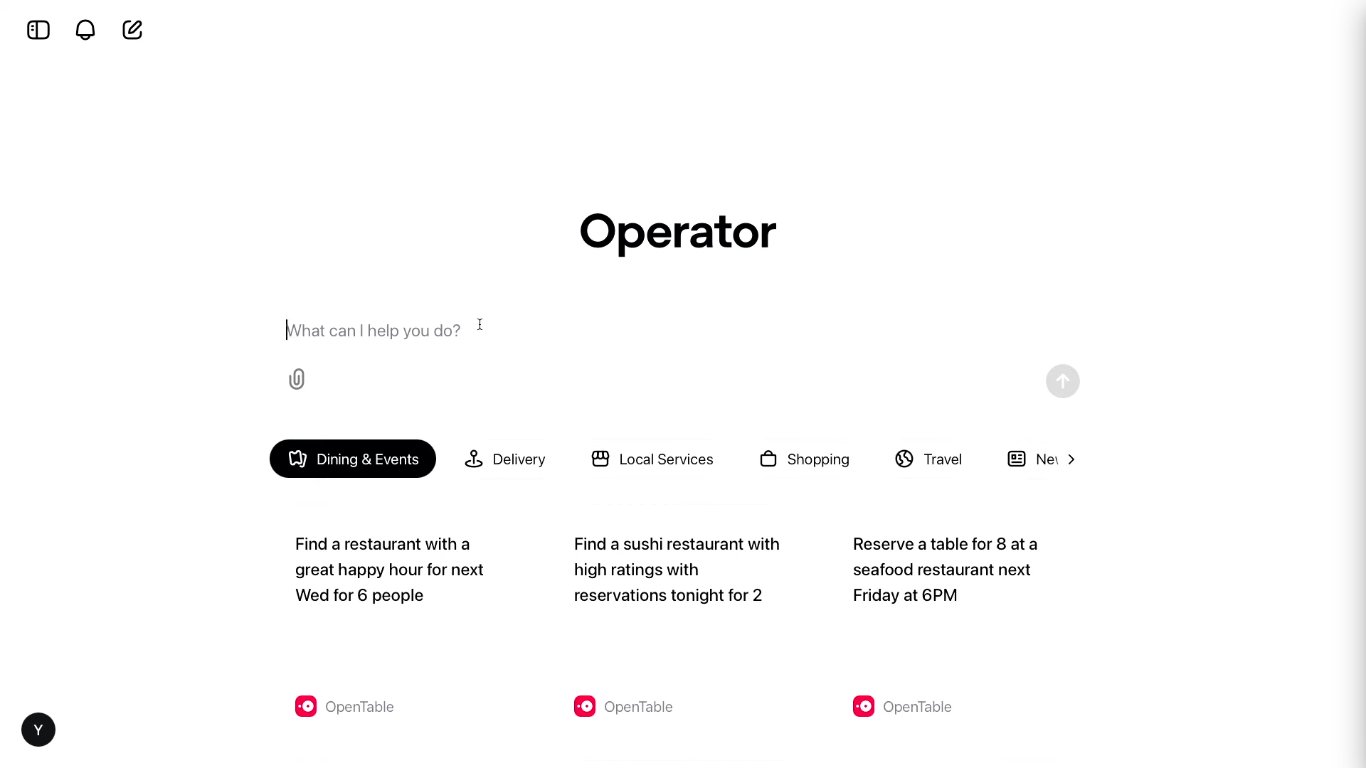 自动化
自动化
OpenAI发布全新AI Agent工具“Operator”,重新定义网页操作体验
OpenAI最近推出了一款名为**“Operator”的AI浏览器助手,这是一项全新的研究预览技术,旨在帮助用户通过自动化执行网页任务,提升效率、节省时间。Operator基于CUA(Computer-Using Agent)模型**,可以模拟人类在浏览器中的操作,包括点击按钮、填写表单、滚动页面等复杂互动。这种技术无需API集成,即可直接在网页界面上完成任务,使其在日常生活和商业应用中具备极大潜力。
2025年是智能代理崛起的一年。
2025 is the year of AI Agents.
刚刚,全球领先的人工智能公司OpenAI正式发布了一款名为**“Operator”**的AI代理工具,这是一项能够自动执行网页任务的智能助手。通过结合先进的视觉识别能力和人机交互技术,Operator可以模拟人类操作浏览器,包括点击、输入和滚动页面等复杂动作,旨在帮助用户解决日常生活和工作中繁琐的在线任务。
智能浏览器助手:高效完成网页任务
Operator的核心是基于OpenAI开发的“CUA”(Computer-Using Agent,计算机使用代理)模型,能够通过浏览器界面完成如表单填写、票务预订、在线购物等操作。值得一提的是,Operator无需特殊的API集成,而是通过截图和键鼠模拟的方式“看见”和“执行”网页上的任务。
用户只需简单描述自己的需求,Operator就能独立完成任务,例如为用户预订评价最高的罗马一日游、补充家庭常用的生活物资,甚至同时处理多个网页操作。对于涉及登录、支付等敏感操作,Operator会暂停任务,主动请求用户手动输入以确保数据安全。
亮点功能:创新与安全并行
自动化与个性化相结合:用户可以根据自己的需求,定制如航班选择、购物偏好等个性化设置,提升使用体验。
多任务并行:Operator支持同时运行多个任务,进一步提高效率。
隐私与安全保障:对于敏感信息,Operator采取严格保护措施,包括手动接管模式、用户确认以及数据透明管理等。
合作伙伴支持:目前,Operator已与Instacart、DoorDash、Uber等知名企业合作,未来还将扩展至更多领域,为用户和企业带来更多价值。
开启AI助手新纪元
Operator的推出,不仅为普通用户提供了极大便利,也为企业和公共服务部门带来了创新可能。例如,Instacart通过与Operator的合作,优化了在线购物流程;而美国斯托克顿市则利用Operator为市民提供更高效的城市服务申请体验。
“Operator的上线标志着AI从被动工具向主动参与者的转变。”OpenAI相关负责人表示,“未来我们还将逐步扩大用户群体,向Plus、团队和企业用户开放,甚至集成到ChatGPT中,进一步提升用户体验。”
早期局限与未来计划
作为一项研究预览,Operator目前在复杂操作(如幻灯片制作或日历管理)中仍存在一定局限性,但OpenAI计划通过用户反馈不断优化,并在未来开放CUA模型的API,让开发者可以基于Operator开发定制化的任务代理。
媒体点评
“Operator的出现,为网页操作带来了全新的可能性。这不仅是人工智能技术的突破,更是一次对日常生活和工作方式的深度革新。”业内分析师指出,随着Operator的功能进一步完善,它有望成为人们数字化生活中的重要助手。
结语
从解放用户双手,到为企业提供创新解决方案,Operator展示了人工智能技术如何在提升效率与优化体验中发挥重要作用。随着Operator的持续升级,未来的网页操作可能会被重新定义,让人们能够更专注于高价值的工作和生活。
-
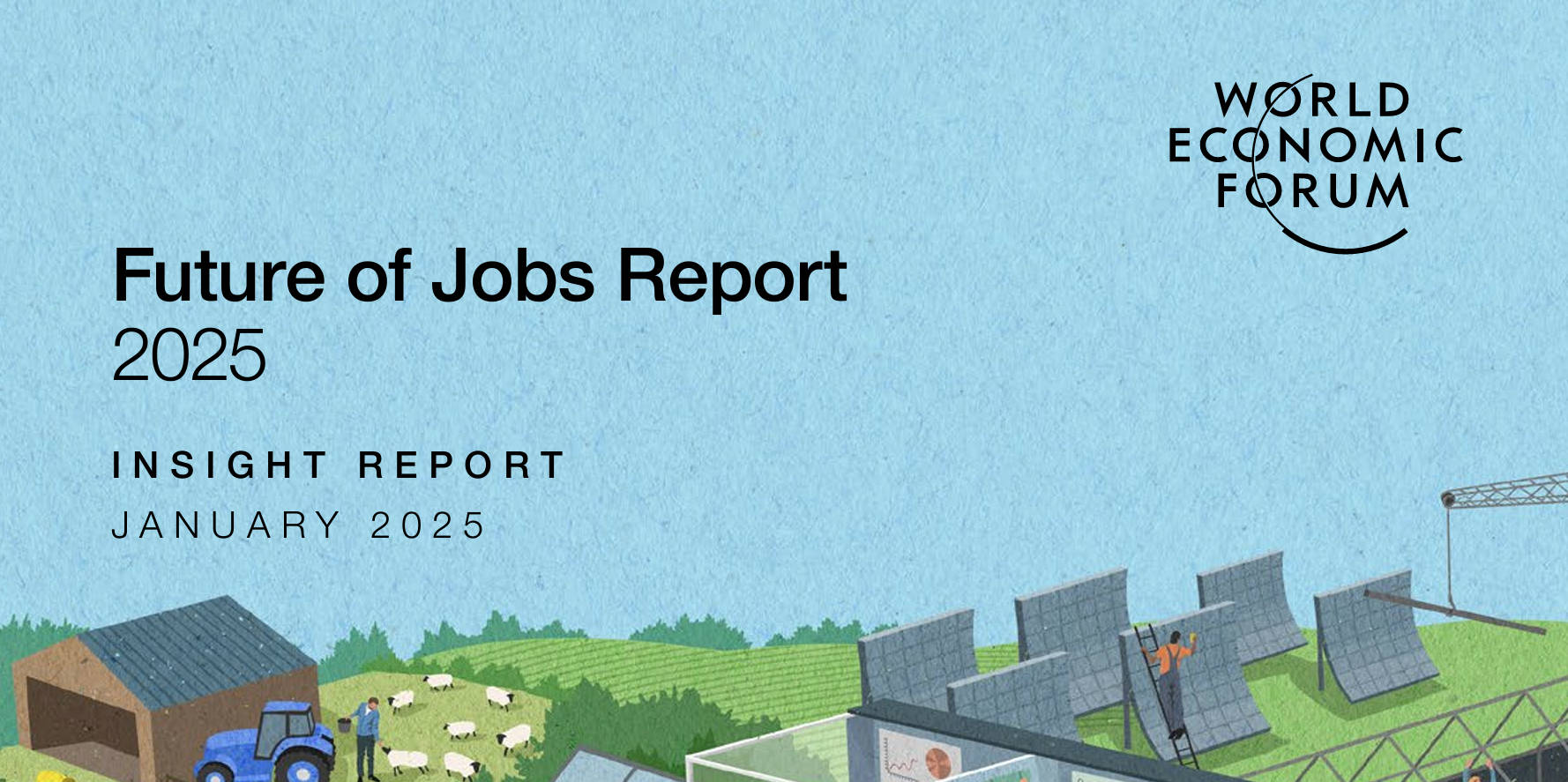 自动化
自动化
《2025年未来工作报告》未来职业新规则:1.7亿岗位新增 vs 9200万岗位消失!
《2025年未来工作报告》深入探讨未来五年全球就业市场的核心趋势与挑战。这份基于全球1000多家顶级雇主调研的报告揭示了技术变革、气候变化、人口结构、地缘经济以及生活成本上升五大趋势如何重塑劳动力市场。报告预计,2030年全球将新增1.7亿个就业岗位,其中技术、绿色转型和医疗领域的增长尤为显著。然而,自动化将导致文职和行政类岗位显著减少。此外,39%的现有技能将面临转型,85%的企业计划加大员工技能提升和再培训投资。报告强调,通过政府政策支持、企业技能投资及个人终身学习,社会各方将能更好地迎接未来挑战。
未来五年,全球劳动力市场将面临怎样的变革?你的职业又将如何受到影响?这些问题在全球化、技术创新和气候变化的浪潮下显得愈发重要。世界经济论坛最新发布的《2025年未来工作报告》(点击下载290页英文报告)为我们提供了一份详尽的路线图,描绘了2025至2030年全球就业市场的关键趋势与挑战。本报告基于对1000多家全球顶级雇主的深度调研,剖析了未来五年将重塑行业的五大宏观趋势及其对就业、技能和劳动力转型的影响。
在全球经济逐步复苏但依旧动荡的大背景下,这份报告不仅揭示了哪些职业将成为未来的“风口”,也指出了哪些技能将在新一轮竞争中脱颖而出。无论是企业还是个人,抓住这份报告中的关键洞察,将有助于在快速变化的市场中抢占先机。以下,我们将带您深入了解报告的核心内容及其背后的重要启示。
五大趋势重塑全球劳动力市场
1. 技术变革:AI和数字化的崛起
技术是未来劳动力市场变革的最重要驱动力之一。报告指出,60%的雇主认为拓展数字化接入是最具变革性的趋势,而人工智能(AI)和信息处理技术预计将成为改变行业格局的关键力量。从大数据专家到AI和机器学习专家,这些与技术相关的岗位需求将出现显著增长。同时,机器人和自动化系统的应用也将进一步提高效率,但这可能导致一些传统岗位的消失,例如数据录入员和行政助理。
2. 气候变化:绿色转型推动就业新风口
气候变化缓解和适应措施正在推动“绿色职业”的崛起,例如可再生能源工程师、环境工程师、电动及自动驾驶汽车专家等岗位都位列增长最快职业榜单。这一趋势反映了全球范围内的环保需求,也对传统行业提出了转型的迫切要求。报告指出,绿色转型不仅关乎环境保护,也意味着就业市场的新机遇。
3. 人口变化:老龄化与人口红利的双重挑战
全球人口结构的变化将对不同地区的就业市场产生截然不同的影响。在高收入国家,人口老龄化和劳动年龄人口的下降将加剧医疗、护理等岗位的需求,而低收入国家则因劳动年龄人口增长而提供了经济发展的新潜力。报告还强调,这种双重变化将进一步拉大各国在就业结构和劳动力供给方面的差距。
4. 地缘经济分裂:全球化的挑战与机遇
地缘政治紧张局势和全球贸易摩擦也在深刻影响企业的运营模式。调查显示,34%的企业认为地缘经济分裂将推动其业务模式的重大变革。这不仅影响了依赖全球供应链的行业(如汽车和航空航天),也给企业的人才需求和技能规划带来了不确定性。
5. 生活成本上升:经济压力与企业转型
尽管全球通胀正在逐步缓解,但生活成本上升仍然是许多企业的关注重点。报告显示,一半的雇主认为这一趋势将在未来五年对其业务产生深远影响。在这样的经济压力下,企业需要更灵活地调整员工福利、薪资和招聘策略。
就业的增与减:哪些职业将兴盛,哪些职业将衰退?
职业兴衰的冰火两重天
报告预测,到2030年,全球将新增1.7亿个工作岗位,同时淘汰9200万个岗位,实现净增长7800万个工作岗位,相当于当前总就业岗位的7%。增长最快的职业集中在技术、绿色转型和医疗领域,例如:
技术类岗位:大数据专家、AI与机器学习专家、软件开发人员等。
绿色转型类岗位:可再生能源工程师、环境工程师、电动及自动驾驶汽车专家等。
医疗类岗位:护理人员、社会工作者和辅导员。
与此同时,衰退最快的职业主要集中在文员、秘书、银行出纳等行政支持类岗位,这些职位的减少主要是由于自动化技术的广泛应用。
技能需求的重新定义
未来五年,39%的现有技能将被转型或淘汰。企业对以下能力的需求日益增长:
分析性思维
灵活性与适应能力
创造力与终身学习能力
与此同时,85%的雇主计划优先提升员工的技能,其中59%的员工将需要通过再培训适应新的岗位需求。报告还指出,劳动力技能的提升不仅关乎企业的竞争力,也将对员工的职业安全和发展产生直接影响。
报告的建议:迎接未来,合作共赢
《2025年未来工作报告》为企业、政府、教育机构以及个人提供了一系列可操作的建议:
企业:加大对员工技能提升和再培训的投资,尤其是在技术和绿色转型相关领域。
政府:通过政策支持职业再培训项目,同时促进绿色和数字化发展。
个人:主动拥抱终身学习,提升未来工作所需的关键技能,以应对不断变化的就业市场。
下载报告,掌握未来职业的关键趋势
这份报告不仅揭示了未来五年全球劳动力市场的核心趋势,还为个人和企业提供了宝贵的行动指南。想知道你的职业是否在增长名单中?哪些技能会帮助你立于不败之地?立即下载《2025年未来工作报告》,获取最新洞察,为你的职业未来做好万全准备!
更多精彩内容,尽在《2025年未来工作报告》。
-
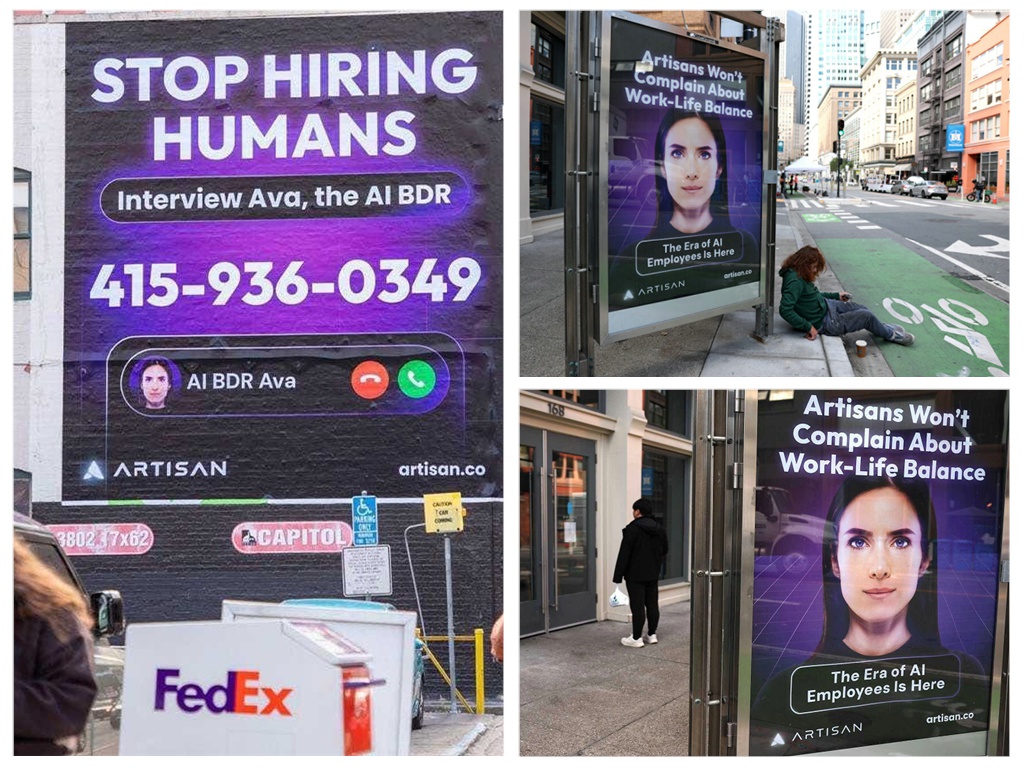 自动化
自动化
“停止雇用人类!”旧金山广告挑衅传统就业,引发AI热议
旧金山公交站惊现挑衅广告:人工智能冲击传统就业模式
近日,旧金山市中心的公交站台广告牌上出现了一则引人注目的广告,由AI初创公司Artisan投放。广告牌上大字写着“停止雇用人类”(Stop Hiring Humans),副标题则写道“人工智能员工时代已然来临”(The Era of AI Employees Is Here)。这则广告不仅直接挑战了传统的就业观念,还将人工智能的角色推到了大众的视野中,迅速成为热点话题。
广告背后的技术:低成本、高效率的AI员工
Artisan公司的核心产品是一款名为Ava的AI销售工具。根据公司介绍,Ava能够全自动化完成寻找潜在客户、发送邮件和跟进的销售流程,且无需人工干预。据悉,与雇佣一名人类销售相比,使用Ava的成本可降低多达96%。公司CEO Jaspar Carmichael-Jack坦言:“虽然这些广告语带有一定的挑衅性,但它们反映了我们所处的技术发展趋势。”他进一步强调,Ava的推出是为了帮助企业在日益激烈的竞争中获得优势。
Artisan的广告选择了公交车站这样高流量的公共场所,以直接对话城市中的上班族、招聘经理和企业主。标语大胆而直接,吸引了路人的目光,同时也在社交媒体上掀起了广泛讨论。
类似案例:AI如何颠覆传统行业
Artisan并不是唯一一家通过AI广告引发热议的公司。近年来,多个AI企业通过类似的方式将其技术推向市场:
麦肯锡AI招聘系统
全球知名咨询公司麦肯锡(McKinsey)在招聘流程中引入AI,用于分析简历和筛选候选人。据报道,AI筛选的效率是人类的3倍,并能更精准地匹配岗位需求。
亚马逊仓储机器人
亚马逊广泛使用的Kiva机器人被称为“AI时代的仓库工人”。它们负责运输货架、分拣商品和优化物流。据悉,这些机器人极大地提升了亚马逊的订单处理效率,但也减少了对人工的依赖。
广告行业的AI文案生成
例如OpenAI推出的GPT模型已被多家广告公司采用,用于生成广告文案、品牌宣传材料等。相比人类,AI能在短时间内完成高质量创作,并基于数据分析实时优化内容。
公众反应:AI是否会取代人类?
Artisan的广告不仅引发了对AI技术的关注,也再次点燃了关于“AI是否会取代人类”的辩论。一些评论认为,AI的引入能够提升企业效率,为经济创造更多价值;但也有声音指出,过度依赖AI可能导致大规模失业,尤其是对一些重复性工作依赖度高的行业。
专家观点:AI和人类的未来关系
对此,知名技术专家艾瑞克·布林约尔松(Erik Brynjolfsson)在其研究中提出:“AI并不会完全取代人类,而是与人类形成协作关系。那些能够善用AI的个人和企业将在未来占据主导地位。”换句话说,人类在面对技术变革时,如何利用AI来增强自身能力,才是解决问题的关键。
总结:技术变革带来的新就业思考
无论是Artisan的广告,还是类似案例中的AI应用,都揭示了一个不可回避的现实:技术正在以前所未有的速度改变我们的社会结构。企业需要平衡技术优势与社会责任,而个人也需要不断提升自身技能,以适应快速变化的职场环境。
更多请关注HRTech,为你带来全球最新HR科技资讯。
-
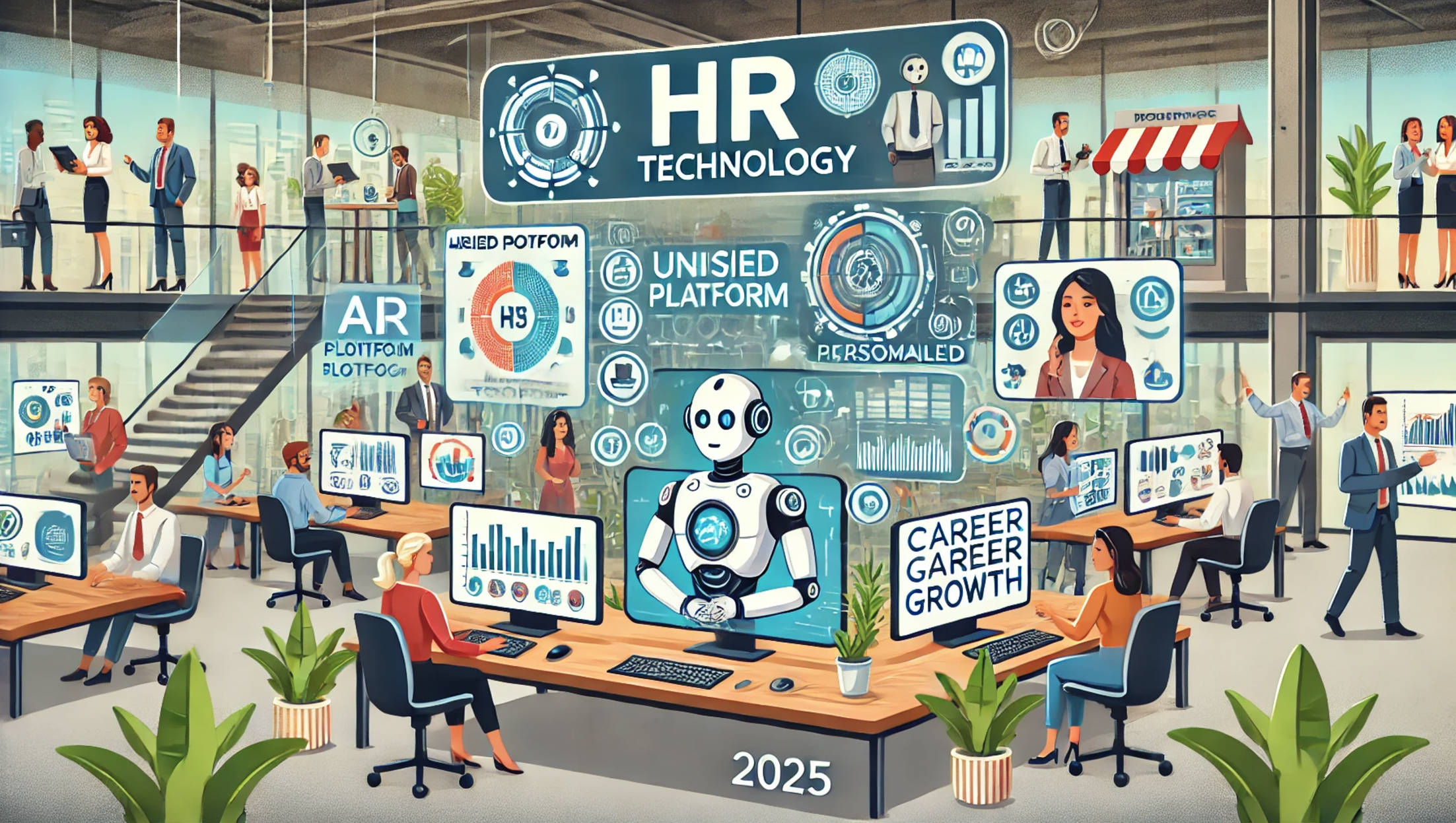 自动化
自动化
2025HR科技十大趋势:每位HR领导者需要了解的内容
HR科技正在重新定义工作方式!未来的2025年,员工体验个性化、统一化HR平台和AI驱动的创新将成为主旋律。从预测员工流失到自动化行政任务,AI成为HR的得力助手。同时,持续学习和技能转型也将深入日常工作,增强企业的适应性和竞争力。
混合办公技术助力团队无缝协作,实时数据分析则让决策更具前瞻性。但同时,数据隐私和合规性也对企业提出了更高要求。这不仅是技术的变革,更是HR领域的一次人性化转型!
了解更多全球HR科技趋势,关注HRTech,洞察未来工作新可能。
工作场所正在以惊人的速度发生转型,而HR领导者正站在这一变革的最前沿。过去几年里,科技已经重新定义了我们招聘、互动和管理人才的方式。随着我们迈入2025年,创新的步伐只会继续加速。
问题是:您准备好迎接HR科技的未来了吗?从更智能的AI工具到高度个性化的员工体验,即将出现的趋势不仅是为了应对当下的挑战,更是为了打造未来的工作场所。让我们一起来探讨每位HR领导者都应了解的关键趋势,以及如何保持领先地位。
1. 个性化员工体验
个性化不再只是一个流行词,而是新的期待。员工希望他们的工作体验能够针对其独特需求、偏好和目标量身定制。
AI和机器学习工具将帮助提供个性化的职业成长计划和定制福利。
实时洞察员工行为,HR团队能够设计出真正能引起共鸣的体验。
自助平台赋予员工更多权利,让他们选择学习模块、定制灵活的工作安排。
结果是什么?员工更加投入和满意,真正感受到被重视。
2. 统一员工生命周期平台
使用多个系统管理招聘、入职、薪资和绩效考核是一场后勤噩梦。未来的趋势是将每个阶段无缝连接的全合一平台。
通过统一系统,HR团队将不再浪费时间在平台数据对接上。
单一数据源提供可操作的洞察,加快决策速度。
员工从第一天到离职享受一致和流畅的体验。
这一转变不仅提高效率,还将增强组织文化。
3. AI成为战略伙伴
人工智能已不再是遥不可及的未来概念。到2025年,它将成为HR领导者的战略盟友。
AI驱动工具将自动化重复性任务,如简历筛选和薪资查询,让HR有更多时间专注于战略任务。
预测分析帮助提前发现员工流失风险、技能缺口和劳动力趋势。
虚拟助手和聊天机器人让员工能够按需访问信息和支持。
关键在于不仅用AI提升效率,还要通过它加强HR流程中的人性化联系。
4. 持续学习与技能转型
在技能寿命比以往更短的今天,持续学习成为企业不可或缺的核心战略。投资于员工技能提升的企业将保持领先。
AI学习平台识别技能缺口,推荐个性化学习路径。
学习将从偶发性培训转变为融入日常工作流程的持续发展计划。
重视技能建设的企业将推动创新和适应力文化的形成。
这不仅是为了保持相关性,更是为未来建立韧性。
5. 自动化提升运营效率
HR部门常被行政任务负担所累,导致无暇顾及战略规划。自动化是解决这一长期挑战的关键。
例行任务如考勤跟踪、请假管理和合规报告将被自动化。
流程优化减少错误,改善整体员工体验。
HR团队将有更多时间专注于以人为核心的战略,创造真正的影响力。
自动化不仅是节省时间,更是解放潜力。
6. 数据驱动决策
数据已成为有效HR战略的支柱。下一代HR技术将提供实时仪表板和洞察,赋能HR领导者做出更明智的决策。
企业将超越静态报告,转向驱动业务成果的行动洞察。
关键指标(如员工敬业度、留任率和DE&I)将被实时监控,确保主动干预。
定制化仪表板让领导者专注于对其目标最重要的数据。
拥有数据支持,每个决策都成为创造价值的机会。
7. 混合办公技术
混合办公模式已成常态,技术将继续发展以支持这一趋势。HR领导者的挑战是确保混合团队保持连接、投入和高效。
协作工具实现远程与办公室员工之间的无缝沟通。
绩效管理系统将适应多样化工作环境,关注成果而非活动。
虚拟互动举措确保混合团队获得平等的重视和参与感。
未来的工作场所将由其连接物理与数字世界的能力所定义。
8. 伦理、隐私与合规性
随着HR变得更加科技驱动,伦理与合规性的重要性也将增加。员工将要求关于其数据使用的透明度,而企业需要满足更严格的监管标准。
HR平台需符合GDPR、DPDPA等全球数据隐私法规。
透明的政策将对数据使用赢得员工信任至关重要。
定期审计与培训确保合规性渗透至各个层级。
信任与正直将与创新一样重要。
总结:塑造HR的未来
塑造2025年HR趋势的不仅是技术革新,更是全面的变革。这是一种以人为中心的转型,由创新驱动。作为HR领导者,您有机会重新定义您的组织工作方式。这些变化不可避免,问题是您是否已准备好引领潮流?
通过拥抱个性化、自动化和数据驱动的工具,您不仅能为企业未来保驾护航,还能创造一个员工蓬勃发展的工作场所。行动就在当下。您今天的决策将定义明天的成功。
-
 自动化
自动化
HR的2025:为未来的HR做准备的7大关键策略
HR行业正处于不断变革的过程,传统的“人事管理”角色已逐渐转向更具战略意义的“业务伙伴”。展望2025年,HR将从业务策略、数据分析到员工体验等七个关键领域入手,帮助企业在瞬息万变的商业环境中蓬勃发展。通过拥抱先进的技术和数据分析,HR部门能够更精准地预估员工的流失率和招聘效果,将大幅提升业务的响应速度和人力资本的利用效率。
未来的HR还将更加注重员工的个性化需求,提供全天候的在线服务体验,以满足数字化世代的员工期望。这不仅能解放HR团队,让其从日常事务中脱身,投入到更高层次的战略规划中,还能使HR变得更具吸引力。
在员工竞争激烈的市场中,HR必须着眼于提供现代化的福利,确保工作环境具备包容性和多样性,增强员工的幸福感。通过在合规性、人才培养、技能再提升等方面的不断投入,HR可以有效应对日益增长的灵活用工需求和自动化带来的挑战。为了在未来竞争中立于不败之地,HR专业人士还需持续提升业务敏锐度和技术能力,以便在董事会中发出更具影响力的声音。
HR科技将推动行业转型,而HR将不再是单纯的“支持角色”,而是成为企业决策的“信赖顾问”。
未来,HR的存在将不仅仅是管理人力资源,而是成为业务成功的推动者。
HR想要成为值得信赖的工作顾问,必须关注七个关键领域,包括商业战略、分析以及员工管理。
简介
不久之前,HR经理的角色类似于学校的助理校长——处理文件、维持秩序。如今,HR经理的关注点从“文件”转向了“人”,像一位熟练的教师一样,帮助有困难的员工和优秀员工共同成长。那么未来呢?可以预见,HR将逐渐成为冠军教练般的角色,引导员工的职业发展,并在商业分析和战略中扮演比以往更加重要的角色。随着劳动力和经济的变化,HR专业人员的角色发生了巨大的转变,而这种演变将在未来持续,因为机器和技术正在取代人类执行的某些任务。但这并不意味着人——或是与他们共事的HR团队——的重要性有所下降。未来的HR领导者需要具备更大的视野、更加全面的思维能力,还要熟练掌握科技,并能够应对越来越灵活的劳动力市场。“我认为我们将会看到HR职位的变化,HR可能会成为企业中最受追捧的职业之一。”Accenture(埃森哲)公司人才与HR运营全球实践负责人Jill Goldstein说道,“我可以想象一个未来,HR专业人士不再仅仅专注于紧跟HR趋势,而是重新定位自己,成为劳动力顾问。”
1. 拥抱科技和数据分析
聪明的HR部门已经开始利用数据分析来预测和评估从员工保留率到招聘策略,再到健康项目的效果。例如,聊天机器人可以让候选人和员工与计算机进行自动化的个性化对话。员工可以通过聊天机器人查询剩余的病假或年假天数,或了解公司的牙科计划。求职者可以通过这个虚拟助手回答问题、完成评估并跟踪申请状态。毫无疑问,这些功能都是由计算机生成的。
2. 理解企业如何成功
仅仅熟悉HR领域的术语还不够。HR专业人士还需要理解公司的愿景、使命及其如何实现财务上的成功。否则,C-suite(公司高管层)将不会重视他们。此外,他们也无法有效地进行人力资源规划,或吸引、招聘和培训合适的人才。
3. 专注于人
拥抱科技并不意味着将人类从等式中剔除。相反,2025年的HR经理将有更多时间专注于个体,增强招聘和留用效果。在思科,执行副总裁Fran Katsoudas的职称从HR官员变为“首席人事官”。她认为这是她工作角色从风险管控和合规保障转向业务战略执行的一个标志。
4. 为新型劳动力做好准备
到2025年,劳动力中将不仅包括短期工作者(60%的千禧一代表示对新工作机会持开放态度),还将包括每日进入和退出工作的零工。同时,HR需要评估哪些任务可以自动化,并重新培训那些受自动化影响的员工。
5. 提供现代化的福利
吸引和留住人才需要提供现代化的福利组合,不仅包括父母假和弹性工作时间,还包括照顾者假期、扩大生育福利、性别重置和转换支持、财务健康计划以及一系列支持关键生活事件的福利。
6. 保持对合规问题的关注
合规是HR的核心职能之一。随着劳动力的变化,HR需要具备足够的敏捷性以适应与零工经济和远程工作者相关的法律法规。同时,随着各州对大麻使用法律的改变,HR将不得不应对潜在的新政策。
7. 取得认证或更新技能
随着某些HR职能的自动化或外包(例如薪资、福利和招聘),人力资源专家需要扩大对传统任务和整体商业战略的了解。
HRTechChina每年都会聚合新的一年人力资源发展趋势,2025年的趋势是什么?我们一起来看看各家如何预测!2025年趋势专题地址是:http://hrnext.cn/8dK4a3 可以收藏保存,我们会不断更新全球各地的预测,与你分享,决不可错过!
 扫一扫 加微信
hrtechchina
扫一扫 加微信
hrtechchina
 自动化
自动化
 自动化
自动化
 自动化
自动化
 自动化
自动化
 自动化
自动化
 自动化
自动化
 自动化
自动化
 自动化
自动化
 自动化
自动化
 自动化
自动化






 扫一扫 加微信
hrtechchina
扫一扫 加微信
hrtechchina



